Matador Network's Blog, page 723
January 4, 2021
When is the next total lunar eclipse

A full moon is a common occurrence but on a cloudless night, it never fails to impress with its brightness and mysterious uneven surface. More exciting even, is when the full moon takes on deep shades of red and orange in a phenomenon called a total lunar eclipse or “blood moon.” Lunar eclipses happen when the earth blocks the sun’s light and projects its shadow on the full moon, an event that only occurs between zero and three times a year. Because they take place at night when most of us are sleeping, total lunar eclipses are not as popular as total solar eclipses, but they do make for a beautiful spectacle that’s worth staying up for — or even travel for. The last total lunar eclipse was in January 2019, but luckily, there are plenty more happening in the next 10 years, starting in May 2021.
All maps are from timeanddate.com, where you can also see animations of some the lunar eclipses listed below and live streams of the events.
1. May 26, 2021 — Australia and Polynesia

Photo: Time and Date
On May 26, 2021, those lucky enough to be in Melanesia, Micronesia, Polynesia, and most of Australia will be able to see all the phases of the entire lunar eclipse, starting at 8:47 AM UTC. According to NASA, while the eclipse is set to last a little over three hours, the total phase, when the moon is red, will only last about 15 minutes. The total eclipse will also be visible in parts of North America, such as western Canada, Alaska, the western United States, and Mexico.
2. May 16, 2022 — North, Central, and South America

Photo: Time and Date
All of Central and South America will be able to see all the phases of the entire lunar eclipse, starting at 1:32 AM UTC on May 16, 2022, as well as most of Mexico and large swathes of the eastern half of the US and Canada. According to NASA, the eclipse will last about three and a half hours, but the total phase, which will be visible in most of the US, the southern tip of Greenland, Portugal, Spain, and western Africa, will last a little less than an hour and a half.
3. November 8, 2022 — New Zealand, Japan, Canada

Photo: Time and Date
To be treated to a three-hour-and-40-minute lunar spectacle in November 2022, you’ll need to find a clear sky in New Zealand, Polynesia, Japan, eastern Russia, Alaska, the western half of Canada, or the western US — options are aplenty. The show will start at exactly 8:02 AM UTC. If you’re only interested in the total coverage of the moon by the earth’s shadow, NASA explained that it will last about one hour and 25 minutes, which is plenty of time to appreciate it.
4. March 14, 2025 — Canada, US, Mexico

Photo: Time and Date
The Americas will be the place to be on March 14, 2025. The entire contiguous US, Canada, Mexico, Central America, and most of South America will be able to see the whole eclipse, which is due to last three hours and 38 minutes, according to NASA. The total phase of the eclipse will last a little more than one hour. The astronomy show is set to start at 3:57 AM UTC.
5. September 7, 2025 — Australia, Asia, East Africa, Russia

Photo: Time and Date
The total lunar eclipse of September 2025 will be visible in large parts of Australia and most of Asia and Russia so you won’t lack options for seeing it. It will start at 3:28 PM UTC and last three and a half hours, but NASA expects the total phase of the eclipse to last one hour and 22 minutes.
6. March 3, 2026 — Canada, US, Japan

Photo: Time and Date
The March 2026 total lunar eclipse will be just as visible from the wilderness of British Columbia, Canada, as from the beaches of New Zealand and the paradisiacal islands of the Pacific nations. All you’ll need is a clear sky starting at 8:44 AM UTC for about three hours and 27 minutes. The blood moon effect will last 58 minutes, according to NASA.
7. December 31, 2028 — Asia, Eastern Europe, Alaska

Photo: Time and Date
There are few better ways to end a year than by looking at a rare and beautiful celestial phenomenon, and in 2028, starting at 2:03 PM UTC, all of Asia — as well as part of Australia, Greenland, and Europe — will be able to do just that. The entire lunar eclipse will last nearly three and a half hours and the total coverage of the moon by the earth’s shadow will stretch for one hour and 11 minutes exactly, according to NASA.
8. June 26, 2029 — South America, Canada, US, West Africa

Photo: Time and Date
At 34 minutes after midnight UTC on June 26, 2029, the whole of South America, parts of Central America and West Africa, and slivers of the eastern US and Canada will be able to see a total lunar eclipse from start to finish. The event should last a total of three hours and 40 minutes, but for those who want to sleep a little bit and only want to see the moon glowing red, that will last one hour and 41 minutes.
9. December 20, 2029 — Europe, Africa, Middle East

Photo: Time and Date
If the holidays do not provide enough excitement in 2029, know that just before Christmas that year, there’ll be a total lunar eclipse worth every gift under the tree. On December 20, 2029, people in Europe, Africa, the Middle East, and Central Asia will be able to see a total lunar eclipse from start to finish — a phenomenon that will start at 7:42 PM UTC and last for three and a half hours, according to NASA.
10. April 25, 2032 — New Zealand, Australia, Asia

Photo: Time and Date
In 2032, combine spring travels in Asia with astronomical phenomena and check out the total lunar eclipse from a beach in Thailand, the mountains of Taiwan, or even a quiet and cloud-free spot in Japan. The total lunar eclipse will last three and a half hours and start at 12:22 PM UTC. The moon will be covered by the earth’s shadow and appear red for just over one hour. 
More like thisAstronomyThe next 10 total solar eclipses around the world
The post The next 10 total lunar eclipses around the world appeared first on Matador Network.

December 31, 2020
The best resorts in Costa Rica
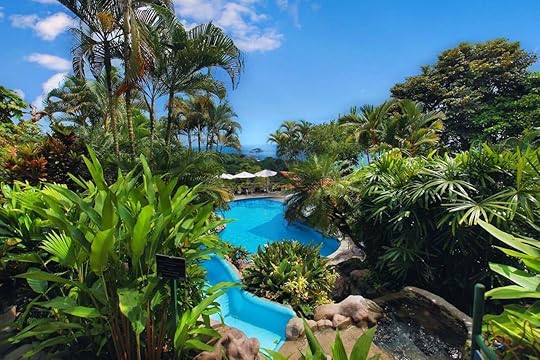
Costa Rica is such a great place for adventure that, in the past, we might have considered choosing to stay in a resort there somewhat of a cop-out. But come 2021, we are embracing the option of comfort and security on our vacations — and Costa Rica definitely has its luxurious side. The resorts below are all outstanding, offering guests the highest level of Costa Rican customer service with all the opulent amenities of a Central American luxury stay. Whether you are considering staying in the mystical cloud forests in the highlands or want to trek south to the remote jungle of the Osa Peninsula, you can choose from a large variety of unique accommodation options. These are our favorite resorts for the ultimate vacation experience in Costa Rica.
1. The Springs Resort & Spa at Arenal — Arenal
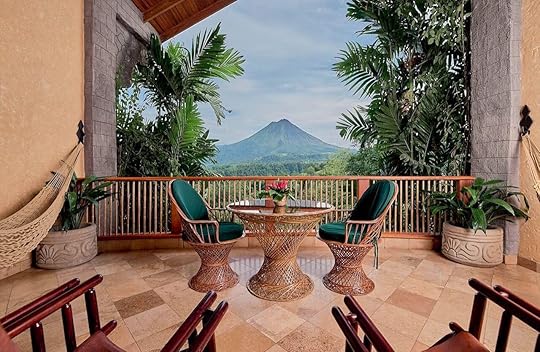
Photo: The Springs Resort and Spa/Facebook
The Arenal Volcano is the biggest draw in Costa Rica’s lowland region. Arenal is the most active of the country’s six volcanoes, but it’s been a while since a major eruption, the last having been in 1968. It is located in Arenal Volcano National Park, which encompasses 29,692 acres and treats visitors to one of the world’s most precious ecosystems.
One of the better places to stay when exploring Arenal is The Springs Resort and Spa. The resort was built on 165 acres of private land and is a short 20-minute drive from the town of La Fortuna. The hotel has one of the best views of the volcano and towers over the Arenal Valley below. A range of activities abounds, including horseback riding, kayaking, rock climbing, and access to 28 hot pools and springs. If you’re in need of some rest and relaxation, the spa uses the surrounding nature, drawing on ingredients from the forest for its five-star treatments. The accommodations are also spectacular and all rooms, suites, and villas at the resort come with a balcony, hammocks, beautiful rocking chairs, and a jacuzzi.
2. La Paloma Lodge — Osa Peninsula
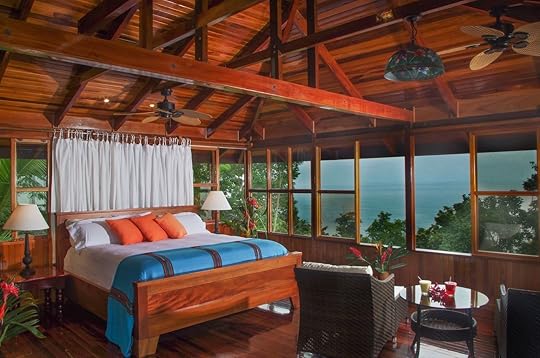
Photo: La Paloma Lodge/Facebook
Located on the southern part of Costa Rica’s Pacific coast, the Osa Peninsula is one of the most remote places in the country. People make the journey here mainly for the reward of incredible surf conditions, but it’s also home to Parque Nacional Corcovado — arguably one of the country’s better national parks in a country jam-packed with them. It’s home to a diverse range of unique wildlife.
La Paloma Lodge is an ideal place to stay if you are interested in exploring the peninsula. The lodge has a team of naturalist guides and promises guests an immersive experience in the surrounding rainforest. The resort sits on Drake Bay, a stretch of coastline where Sir Francis Drake reportedly hid his treasure in the 1500s. This is about as close to a hidden jungle retreat as you can get, with rooms that either open up to views over the ocean or into lush vegetation. Beyond tours of the national park, the resort also runs educational diving and boat trips around the local biological marine reserve, horseback riding along Drake Bay, a canopy expedition, and many other outdoor adventure activities.
3. El Silencio Lodge and Spa — Toro Amarillo
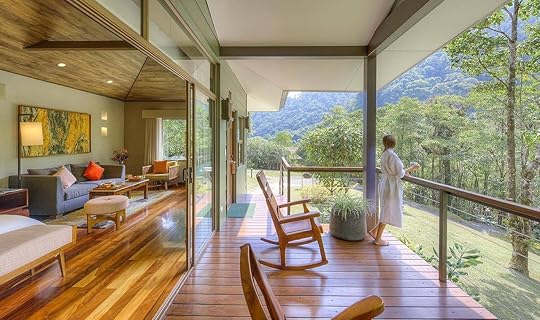
Photo: El Silencio Lodge & Spa/Facebook
El Silencio sits in a remote valley in the cloud forest highlands near the Poas Volcano. The highlands are a short 90-minute drive from San Jose, making this a superb option if you have limited time in Costa Rica.
The grounds of the resort span over a 500-acre private reserve, and like many of the accommodations listed here, sustainability is at the core of the business. El Silencio makes a huge effort to reduce its environmental footprint in the forest and works hard to protect the local environment and culture. In other words, this is not a Cancun-esque vacation. Guests here are embedded in nature and encouraged to learn why the ecology of Costa Rica is not only special but also hugely important to the wellbeing of the entire planet. The suites are modern and stylish and come with private outdoor hot tubs, while the two- and three-bedroom villas have beautiful kitchens and lounge areas. The onsite restaurant, Las Ventanas, has a seasonal menu, and in keeping with the lodge’s commitment to supporting the region, it draws from local suppliers and farmers.
4. Casa Chameleon at Las Catalinas — Playa Danta, Guanacaste
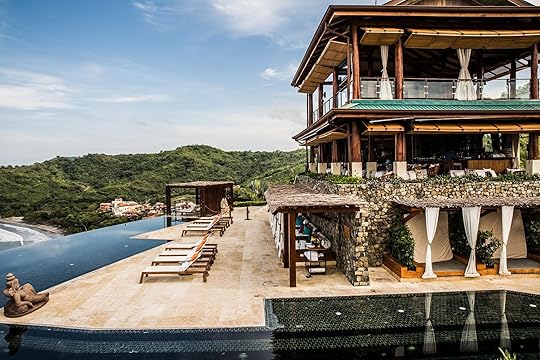
Photo: Casa Chameleon at Las Catalinas/Facebook
Playa Danta is on the Guanacaste coast around 45 minutes north of the well-known, busy beach town of Tamarindo. Its location at the north end of Potrero Bay means the black-sand beach does not get big swells unlike most other spots on the coastline, making it a great place to SUP, snorkel, and kayak — all without the crowds.
Casa Chameleon has been built into the hillside above the man-made luxury small town of Las Catalinas. Opulence is what’s on offer here, from the infinity pool with unobstructed views of the ocean, a yoga studio with a 360 panoramic vista, and an exceptional restaurant and bar. Small details such as unique brass door handles from Indonesia to Moroccan-style lighting really set this resort apart from others in the region. The rooms each come with a private saltwater plunge pool, terrace, and a luxurious king-sized bed.
5. Florblanca — Santa Teresa
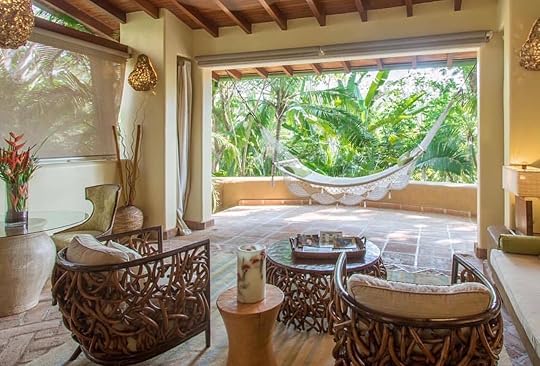
Photo: Florblanca Resort/Facebook
Santa Teresa is a small town on the Nicoya Peninsula around 90 miles from the capital of San Jose. It was once a small fishing hub but now attracts surfers and creatives from all over the world. The main track road of Santa Teresa runs behind the beach and is peppered with nice local boutiques, restaurants, and hipster cafés.
Florblanca’s 11 villas are buried in the jungle that looks over the beach less than a mile from the town. Winding paths connect the rustic but luxurious villas, each with its own two-person hammock and private lounge area. The service here is impeccable — staff learn guests’ names before arrival — and the range of activities on offer is outstanding. If you enjoy outdoor adventure sports, this is a great place to make camp when in Costa Rica.
With a core focus on health and wellness, Florblanca offers classes in surfing, SUPing, fishing, pilates, and yoga. You can go ziplining, take local excursions around the peninsula, or just kick back with a coconut at the highly rated restaurant, Nectar.
6. Kinkara — San Isidro
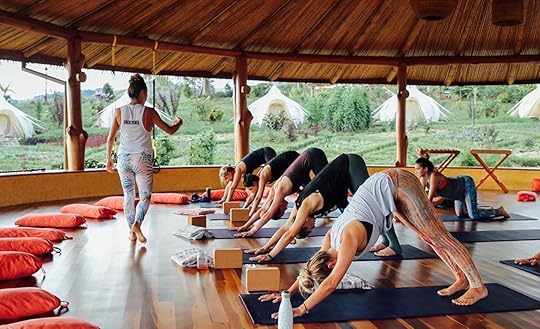
Photo: Kinkara
Built into lush forest surroundings, Kinkara sits on the Talamanca mountain range. Located a short 20-minutes drive from San Isidro, the largest town in southern Costa Rica, the eco-friendly retreat lies 3,000 feet above sea level and has a view of the country’s tallest mountain, Mount Chirripó.
Kinkara is highly rated as being one of the best health and wellness resorts in the country, and past guests rave about the farm-to-table dishes that are produced by award-winning chefs at the onsite restaurant. In fact, the retreat aims to become the most biodiverse source of food grown in one location in the world.
Unlike other options in the country, Kinkara is unique in that its accommodation is glamping. The luxurious tents stand in a circle with inward views that look out over more than 100 beds of vegetables and herbs. Tours of the farm projects are available to all guests, as are other activities such as river hikes, mountain biking tours, yoga and meditation, and world-class treatments at the spa.
7. Secrets Papagayo — Papagayo Peninsula, Guanacaste

Photo: Secrets Papagayo/Facebook
Unlike Santa Teresa, which has managed to avoid serious modernization, the Papagayo Peninsula in Guanacaste is a shiny new gated development. Here you’ll find upscale resorts, golf clubs, and a marina.
One of the better resorts on the peninsula is Secrets Papagayo. Unlike most of the places listed here, this property is extensive. There are 202 rooms, and the resort offers all the modern amenities of a typical upscale resort. Secrets is adults-only and attracts a lot of honeymooners looking for a quiet and peaceful escape. There are four on-site, à la carte restaurants; a buffet venue; a grill; and a café, so guests don’t really have to leave the property during their stay if they don’t want to. When it comes to activities, there’s everything you could expect in terms of water sports, but you can really step it up with ATV mountain excursions and individual or group cooking lessons.
8. Nayara Springs — Alajuela Province, San Carlos
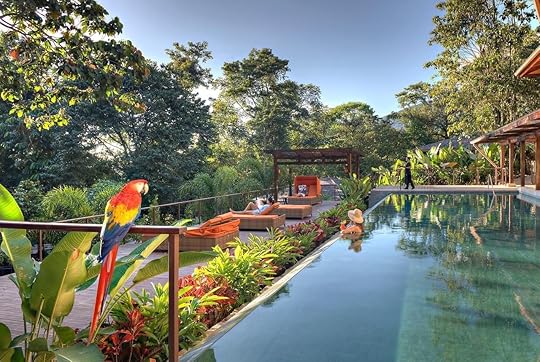
Photo: Nayara Springs/Facebook
Nayara Springs is another resort in the previously mentioned Arenal Volcano area. The Nayara Springs resort is the adults-only section of the well known Nayara Hotel to which it’s connected by a footbridge. Each of the 35 villas is elegant but homey, offering guests privacy with their own private plunge pool and outdoor shower. Breakfast is also served on the villa’s deck, away from other guests. One of the resort’s highlights is its fine-dining restaurant, Amor Loco, which serves up local red snapper and beef tenderloin. The area around the resort and nearby town of La Fortuna is an outdoor playground, but you might not want to leave the confines of Nayara. The resort offers daily yoga sessions, massages in an outdoor pavilion, and an extensive spa menu drawing on local traditions and ingredients.
9. Lapa Rios Ecolodge — Osa Peninsula
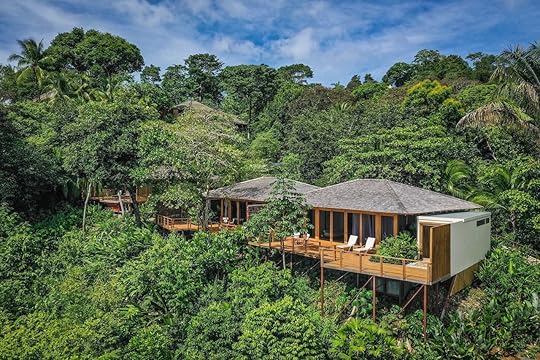
Photo: Lapa Rios Lodge/Facebook
Another world-class lodge resort in the Osa Peninsula is Lapa Rios Ecolodge. The eco-conscious resort has been built into the rainforest and consists of 17 private bungalows. As the peninsula is a trek to reach, guests who make this journey commonly have an interest in learning about the unique ecosystem and wildlife — but this is no jungle camp. The upscale eco-lodge has an array of five-star villas to choose from. Each comes with its own private balcony, where guests can enjoy a view of the ocean with a soundtrack of bird song from the surrounding jungle.
10. Si Como No Resort, Spa, & Wildlife Refuge — Manuel Antonio National Park

Photo: Sí Como No Resort & Wildlife Refuge/Facebook
Manuel Antonio National Park is one of the most popular tourist attractions in Costa Rica. The park sits on the Central Pacific Coast near the town of Quepos. People flock here mainly because of the park’s beauty. Within its boundaries, you can hike to one of three pristine beaches through the thick rainforest, and this is one of the most biodiverse places on the planet.
The Si Como No Resort is not the most luxurious in the park, but it is one of the best in terms of value for money. The property is built into the hillside looking out over the Pacific. The resort has everything you could ever want from a relaxing and fun vacation. A movie theater, full-service spa, two restaurants, and two pools with swim-up bars keep guests fully entertained, and upgraded rooms have ocean views and private hot tubs. It is also an ideal option if you are traveling with family as Manuel Antonio is an easy transfer from the capital San Jose. 
More like thisWhere to Stay7 minimalist resorts that will allow you to fully decompress
The post The best resorts for the ultimate 2021 vacation in Costa Rica appeared first on Matador Network.

2021’s first meteor shower

2021 isn’t wasting any time when it comes to dazzling celestial events. The first meteor shower of the year will take place from January 2 to January 3.
The Quadrantid meteor shower is considered one of the impressive showers of the year, typically occurring between December 28 and January 12. During the shower, meteors appear to radiate from a constellation called “Quadrans Muralis,” which actually no longer exists.
According to NASA, “An alternative name for the Quadrantids is the Bootids since the meteors appear to radiate from the modern constellation of Bootes. Even though the constellation may no longer be recognized, it was considered a constellation long enough to give the meteor shower its name.”
From Saturday night to Sunday morning this weekend, there’s a possibility of spotting between 60 and 200 meteors per hour traveling 25 miles per second. This shower, which lasts for approximately six hours, is known for its bright fireball meteors, which are larger explosions of light that last longer than typical meteors. The best chance to view the shower’s peak in the US will be on Sunday morning (around 9:30 AM ET or 6:30 AM PT).
The Quadrantid shower has the potential to be the brightest meteor shower of the year. 
More like thisAstronomy5 places where you can ski under the northern lights
The post The first meteor shower of 2021 is happening on New Year’s weekend appeared first on Matador Network.

Alaska Airlines banning ESAs

Alaska Airlines will become the first US carrier to ban Emotional Support Animals (ESAs) on its flights.
Starting on January 11, Alaska Airlines will only allow trained service dogs and refuse transport to any other ESA. The decision follows a ruling by the Department of Transportation from early December that says that airlines will not be required to recognize ESAs as service animals, and may treat them as pets.
Until now, the agency hadn’t defined what, exactly, was a service animal, meaning all animals were allowed aboard, including pigs and peacocks.
In a news release, Alaska Airlines said, “Following recent changes to U.S. Department of Transportation’s (DOT) rules, Alaska Airlines will no longer accept emotional support animals on its flights. Alaska will only transport service dogs, which are specially trained to perform tasks for the benefit of a qualified individual with a disability.”
The airline requires service dogs not be so large as to exceed the footprint or personal space of a guest’s seat or foot area, must be leashed at all times, and cannot be under four months old.
“This regulatory change is welcome news,” said Ray Prentice, director of customer advocacy at Alaska Airlines in the news release, “as it will help us reduce disturbances onboard, while continuing to accommodate our guests traveling with qualified service animals.”
Passengers who booked a flight before January 11 with an ESA will still be allowed to bring the animal aboard until March 1. 
More like thisPetsThe best hotels around the world for your dog
The post Alaska Airlines is the first US airline to ban emotional support animals appeared first on Matador Network.

US may expand COVID-19 testing

To boost overseas travel, the United States is considering expanding COVID-19 testing for international travelers as early as next week. Federal agencies have been talking with airlines recently about how to safely resume international travel as the pandemic is ongoing.
The CDC just ordered a testing requirement for travelers flying to the US from the United Kingdom due to the new strain of COVID-19, and presumably, something similar could be done for other countries as well.
Airlines for America, a lobbying group, said that they have been “advocating for the federal government to set a national standard on testing in order to lift travel restrictions. We are working collaboratively with federal authorities to restore international travel with pre-flight Covid testing.”
According to a statement by the CDC on Wednesday (as reported by Reuters), “Efforts are currently ongoing in the U.S. to assess the risk reduction associated with testing and other recommended preventative measures, determine what a feasible testing regime for air travel may look like, and gain some level of agreement on standards for a harmonized approach to testing for international air travel.”
Currently, the CDC recommends air travelers test negative for the virus one to three days before travel and again three to five days afterward. 
More like thisAirports + Flying14 airports where you can get tested for COVID-19 in the US
The post US may expand COVID-19 testing to boost international travel appeared first on Matador Network.

Where to see the next 10 eclipses

Unless you’re from the Arctic Circle, it’s not often you get to stare up at a dark-as-night sky in the middle of the day. This is what makes total solar eclipses so special — and worth planning an astronomy-themed trip to see in person. A total solar eclipse occurs when the moon travels between Earth and the sun, fully blocking out the sunlight for a short span of time. In 2017, the US saw its first total solar eclipse in almost 40 years, wowing spectators from Tennessee to Oregon. If you missed it, don’t fret: Total solar eclipses occur, on average, every 18 months, albeit rarely in the same part of the world twice. These are the next 10 total solar eclipses to mark on your calendar — starting with 2021.
Note: According to NASA, you must be somewhere within the blue lines depicted on each map to see the totality of the sun being covered. All maps are NASA’s. Eclipse Predictions by Fred Espenak, NASA’s GSFC.
1. December 4, 2021 — Antarctica

You probably won’t be seeing this eclipse in person — although several Antarctic cruise lines already advertising special solar eclipse voyages — but it’ll sure be a spectacle for all those penguins. Interestingly, because it’s a polar region, the total eclipse will sweep across the Antarctic Peninsula from east to west for just under two minutes, rather than following the typical west-east trajectory.
2. April 8, 2024 — Mexico, Continental US, Eastern Canada

The last time a total solar eclipse graced the US, aptly named the Great American Solar Eclipse, was 2017. The next will be in 2024. It’ll be visible across North America, starting on the west coast of Mexico and ending over Newfoundland, Canada. In the US, you can see the eclipse in Texas, Oklahoma, Arkansas, Missouri, Illinois, Indiana, Ohio, New York, Vermont, and Maine. For the longest span of totality, almost four and a half minutes, visit Durango, Mexico.
3. August 12, 2026 — Arctic, Greenland, Iceland, Spain

Iceland and northern Spain will be the best places to view the eclipse in the summer of 2026. The greatest eclipse, and longest total, will occur off the coast of Iceland. Spain, however, offers easy viewing in Valencia, Bilbao, and elsewhere, the first time in over a century the nation will see a total solar eclipse. The eclipse will also pass over the Arctic and Greenland, and a partial eclipse will be visible across much of Western Europe, including England, Portugal, and France.
4. August 2, 2027 — Morocco, Spain, Algeria, Libya, Egypt, Saudi Arabia, Yemen, Somalia

Traveling east from the Atlantic Ocean, this eclipse will cross the Strait of Gibraltar, which connects Spain to Morocco, then hug the northern ridge of Africa all the way to the Middle East. The longest duration of totality will be visible just outside Luxor, Egypt, for a whopping six-plus minutes. Mecca, in Saudi Arabia, also sits on the path of totality.
5. July 22, 2028 — Australia, New Zealand

2028 is Oceania’s time to shine — well, just the opposite, actually. This eclipse will cut across Australia, hitting parts of Western Australia, the Northern Territory, Queensland, and New South Wales, whose capital, Sydney, might just be the best place to take it all in. The southern tip of New Zealand is also on the eclipse’s path, namely Dunedin, the second-largest city on the South Island after Christchurch.
6. November 25, 2030 — Botswana, South Africa, Australia

Photo: NASA
2030 will be here sooner than we think, and it’s bringing a total solar eclipse along for the ride. The eclipse will occur over Southern Africa and Australia. Botswana and South Africa will experience a total eclipse while a partial eclipse will be visible from Lesotho, Namibia’s Skeleton Coast, and even as far south as Australia.
7. March 30, 2033 — Eastern Russia, Alaska

Eastern Russia and Alaska are the only places to see this total solar eclipse, but a partial eclipse will be visible in much of North America. If you’re in Alaska, head for Nome, which is expected to experience totality for nearly two and a half minutes, starting at 9:46 AM. Anyone interested in sky-gazing should stick around for a while after the eclipse as March also happens to be a perfect time to see the aurora borealis in Alaska.
8. March 20, 2034 — Nigeria, Cameroon, Chad, Sudan, Egypt, Saudi Arabia, Iran, Afghanistan, Pakistan, India, China

March 20, 2034, will be no ordinary eclipse. It’ll be what’s called an Equinox Eclipse, meaning the equinox and total solar eclipse will align. Chad will see the longest span of totality, just over four minutes, but the eclipse will also pass over neighboring Central African countries like Cameroon and Sudan, as well as South Asian nations like Afghanistan and Pakistan, stretching as far east as China. A handful of big cities — like Lagos, Nigeria, and Leh, India — fall on the path of totality. With so many potential trips you could plan around this eclipse, it’s a good thing you’ve got more than a decade to start putting together your itinerary.
9. September 2, 2035 — China, Korea, Japan

It’s hard to say what surprises 2035 will bring, but the total solar eclipse on September 2 is one event to look forward to. The eclipse will pass over East Asia and the Pacific, with the path of totality crossing the Chinese and North Korean capitals of Beijing and Pyongyang, respectively, while barely missing Tokyo as it crosses over Japan.
10. July 13, 2037 — Australia, New Zealand

While stargazers from North Africa to West Asia will begin 2037 in view of a partial solar eclipse in January, those located in Oceania will be privy to a total eclipse come July. To glimpse totality, base yourself in Brisbane or Australia’s Gold Coast that winter (in the Southern Hemisphere, that is) or set up camp on New Zealand’s North Island. 
A version of this article was previously published on August 31, 2017, and was updated on December 31, 2020, with more information.
More like thisAstronomyThe 6 most epic and unique ways to see the northern lights
The post The next 10 total solar eclipses around the world appeared first on Matador Network.

Positive sustainability news 2020

This is The Climate Win, the most positive sustainability news around the world every week.
New Year’s Eve is upon us, signaling the end of a dramatic and, for many, disastrous year. The term “silver lining” hardly seems appropriate to qualify positive developments during a pandemic that has taken the lives of 1.8 million people worldwide and upended the stability of millions more. Still, we’d be remiss to not acknowledge that 2020 was in many ways a monumental year in the fight against climate change. This is a year-end roundup done Climate Win style.
The world watched rush hour disappear seemingly overnight in March as more than one billion people globally endured lockdown measures. Non-essential businesses sent employees home, where the fortunate learned to fire up Slack and Zoom rather than their car engines at the break of each new workday. Travel came to a near-halt, with borders sealed and the fate of the airline industry tossed into chaos. We pulled the plug on in-person entertainment and flocked instead to streaming services and virtual happy hours. As lockdown measures loosened with the warming weather of spring and we adjusted to — or at least accepted — the chaos, summer and fall became seasons of cautious road trips close to home and evermore video streaming. We also hopped on bicycles and took over the streets of our cities like hordes of two-wheeled ballyhoos, some of which we never gave back.
The end result was a stunning seven percent decline in global carbon emissions from last year, according to the Global Carbon Project.
To be sure, 2020 will go down as a dark year in history, both for the travel industry and for humanity at large. But on the climate and justice fronts, it will also be remembered as the year we learned what is possible because we were, at once, forced to see it play out before us. Through forest fires and hurricanes, through a terrifying pandemic and a knee on the neck of the innocent, we learned that the people who keep our shelves stocked, our stomachs fed, and our hearts beating are the true heroes. We learned to get by with less and had more time to call old friends for a laugh.
And we learned that Mother Nature still has our back, even when those in power don’t have hers. Americans headed en masse to their public lands in 2020. Getting outside gave us something to do when the restaurants, bars, sporting events, malls, and everything else we took for granted weren’t viable options. Fortunately, this proved the economic value of protecting public lands, highlighting the importance of conservation and outdoor recreation in combating climate change.
Many also came to understand the importance of honoring the original inhabitants of those lands, furthering the call to protect them, and that environmental justice is not just a faint cry from the sidelines but the best conceivable way to move society forward.
This year, solar power became the cheapest way to produce and distribute energy to the masses, and with technology increasing and prices dropping, renewable energy and the electric vehicle sector have the power to make that seven percent drop an annual occurrence. Initiatives like 30 by 30 — protecting 30 percent of the planet by 2030 and 50 percent by 2050 — are gaining steam worldwide. Carbon capture and storage is newly on the rise and clean energy research and development is a massive part of the new coronavirus relief bill in the United States.
Seven percent is not a large number. And indeed, past periods of emissions drops have seen rebounds and eventual gains as society simply “returned to normal.” But we didn’t have the technology or the environmental foresight in 1918, 1945, or even 2009, that we do now. Seven percent year over year puts us at net zero emissions by the mid-2030s, within range of the goals of the 2015 Paris Agreement and with a fighting chance at preserving much of Earth’s biodiversity and the habitats that support it.
The world’s biggest polluters are waking up to the need for climate action. The results of the US election in November promise to sweep a collective of climate advocates into prominent federal and state positions the likes of which our country has never seen, with the power to re-establish the US as an innovator on the world’s most pressing issues. As travelers, it is our duty to use the knowledge gleaned from our ever-broadening perspectives to support this in every way we can, starting with traveling more sustainably once it’s safe to do so.
Reader, we finally have both momentum — and, soon, Obama’s former EPA director Gina McCarthy — on our side. Let’s do 2021 like our future depends on it.
More climate wins
Electric airplanes are closer than ever to being commercially ready for flights under 500 miles, according to a report from Quartz. Hybrid and battery-operated planes could be in the air as soon as next year, if all goes right, their research and interviews found.
Also on the sky-high front, Japan Airlines has launched what it has dubbed the “Ethical Choice Meal Skip” option, which gives passengers the chance to skip an airline meal they probably wouldn’t eat anyway and thus prevent it from being prepared in the first place. The goal is to reduce food waste and is part of the airline’s commitment to the United Nations Sustainable Development Goals.
We close the year by looking forward. The National Park Service released its annual list of days you can visit national parks and monuments for free in 2021. The free-for-all starts with Martin Luther King, Jr. day on January 18 and concludes with Veterans Day on November 11. 
More like thisWildlife9 ways that 2020 was actually a great year for wildlife
The post Global carbon emissions actually fell in 2020, and we can keep the momentum appeared first on Matador Network.

December 30, 2020
Luxury backcountry lodges

If ever there was a time for an excursion to call you away from it all, deeper into the mountains and further into the wilderness, it’s now. Thing is, it’s cold out there. The answer is the backcountry ski lodge, the sophisticated and well-kept cousin to the more common backcountry ski hut. With amenities like fine-dining, top-shelf wines, and even hot tubs, there’s no reason to rough it on your winter wilderness escape. Add in easy access to backcountry skiing, and these luxury chalets prove that just because backcountry lodging is remote doesn’t mean it has to be rugged.
1. Sheldon Chalet, Denali National Park

Photo: Alexandra Avila, courtesy of REYA Communications
Deep within Alaska’s Denali National Park, the exclusive Sheldon Chalet is the perfect place to be far removed from the rest of the world without having to sacrifice a single comfort. The hexagonal chalet sits on Ruth Glacier, a mere 10 miles from Denali’s summit, offering views of North America’s highest mountain that are impossible to enjoy from most places within the park. The chalet is catered by professional chefs serving gourmet Alaskan cuisine, and after dining, you’ll sleep under a sky full of stars.
Air service lifts you to the chalet, where you’ll be outfitted with custom-sized outdoor climbing and exploratory gear. Beginning this season, the exploratory experience is as good as it was in the 1960s because guided backcountry skiing has been brought back for the first time in 50 years — and it comes complete with avalanche and glacier-travel training. Go ski touring up the towering backcountry runs of Denali with skins on your skis and then ski back down towards the lodge. If you’re lucky, you’ll enjoy the northern lights over happy hour.
2. Red Mountain Alpine Lodge, Colorado

Photo: Red Mountain Alpine Lodge/Facebook
The rugged San Juan Mountains of southern Colorado are the closest thing to the European Alps that North America has to offer, and you’ll be atop them at Red Mountain Alpine Lodge. At 11,000 feet and high above the already high-mountain town of Ouray, the term “lodge” is used loosely here. The spot sleeps up to 22 guests; features an onsite coffee bar and après bar stocked with draft beer, fine wines, and spirits; and serves fully catered meals three times per day (including a piping hot soup as soon as you return from the outdoors).
From the lodge, depart on snowshoes or skis and explore the steep ski lines of Red Mountains #1, #2, and #3 or any of the surrounding basins, where more than 200 inches of snowfall annually. San Juan Mountain Guides leads guests into the backcountry and provides expertise on where to ski safely and where the best pockets of untouched powder lie. Afterward, sip hot chocolate by the fireplace, go out on the deck to watch the snowflakes fall, or relax with a book in the living room while pausing occasionally to listen to stories of alpine heroics from the guides, staff, and other guests. When it’s time to crash, you’ll either sleep in the bunk room or in one of the private bedrooms, equipped to be more comfortable than even the nicest of mountain town hotels.
3. Hideout Lodge, California

Photo: Hideout Lodge
At 7,100 feet in the Tahoe backcountry, the Hideout Lodge is a luxury mountain retreat mixed with a bit of western charm. The lodge itself, made of wood from the land on which it is located, has five private fancy bedrooms, two kitchens, and even a movie loft for a quiet night in. The onsite chef prepares everything from hearty breakfasts to fuel a day of exploring the mountains to steak and potatoes for dinner, with the ingredients on your plate as likely to be locally sourced as the beer in your pint glass.
Across from the lodge is another lodge better suited for socializing. Here you’ll find a sauna to fit your ski crew, a saloon and game room, a hot tub, and postcard-perfect alpine views worthy of a raised toast in every direction. The Hideout also specializes in wellness, with onsite yoga and massages available on certain trips and a menu that can be customized to the pickiest of palates — because a hard day on the mountain doesn’t have to be followed by a greasy spoon.
4. Bear Claw Lodge, British Columbia

Photo: Bear Claw Lodge/Facebook
Built along the Kispiox River in what locals refer to as “The North,” Bear Claw Lodge is the epitome of backcountry opulence. At 15,000 square feet, the lodge itself is huge — a two-story structure that has a massive game room and hot tub, along with eight guest rooms and a large lounge area with views over the river towards the surrounding peaks.
The experience at Bearclaw Lodge is unique on multiple fronts. First, the staff serves caffeinated beverages of choice to your bedroom each morning, setting the tone for a day of full-service, high-end dining. Offered from the lodge are backcountry heli-skiing and snowboarding expeditions, and make-it-yourself adventures like snowshoeing. Round those out with a beer or hot chocolate and a game of pool, and you have yourself a true mountain lodge experience.
5. Stratton Brook Hut, Maine

Photo: Maine Huts & Trails
With multiple 4,000-foot peaks surrounding it, Maine’s Stratton Brook Hut, part of the Maine Huts system, offers the easiest access to epic ski lines and frosty snowshoe trails in New England. Located at the top of one of the state’s most popular trails, the Oak Knoll Trail, the hut is the perfect weekend getaway. Strap on the skins and hit trails right from the lodge. Fat bike trails are available, as well, if you’re willing to pedal hard and deal with steeps.
Once inside, the lodge serves a hot lunch on weekends, along with breakfast and dinner built around an adventurer’s schedule and appetite. Should you prefer to eat out on the trail, the chefs can put together a lunch to toss into your backpack. Relax in the library, reading while taking in views of the Bigelow Range peaks. The fire-heated lounge area is ideal for a game of Sixty-Three. 
More like thisWhere to Stay7 gorgeous cabins to rent in the Great Smoky Mountains for a cozy winter vacation
The post These wintry backcountry lodges prove that wilderness can be luxurious appeared first on Matador Network.

Foreign visitors breaking COVID-19

After hundreds of people gathered on Christmas Day at Sydney’s Bronte Beach for a holiday celebration that was only supposed to include 100 people maximum, the country’s Minister of Immigration, Citizenship and Multicultural Affairs is threatening to cancel the visas of foreign visitors breaking COVID-19 rules.
Only 100 people are allowed to gather outdoors at one time, a rule which this gathering broke according to witnesses, with many attendees not even wearing face masks.
Peter Hannam, a local journalist who walked by the event, explained that there were foreign accents in the crowd, CNN reported.
Bronte beach parties… not so much social distancing going on… pic.twitter.com/3StFoCaWB8
— Peter Hannam (@p_hannam) December 25, 2020
Authorities eventually broke up the party and nobody truly knows how many foreign visitors attended, but with New Year’s parties coming up, the Australian government is issuing a warning.
In an interview with the Australian Broadcasting Corporation, the minister said, “Visitors to Australia need to be very clear that if they breach public health orders they are threatening the health and safety of Australians and the federal government will look at their visas.”
Although Australia’s borders are closed to everyone but its own citizens and residents, back in April the government allowed temporary visa holders to extend their stays. 
More like thisTravelWhat travel bans mean for the Australians who needed tourism after summer bushfires
The post Wild Australian beach party could lead to visa cancellations and deportations appeared first on Matador Network.

Man clings to marine beacon

They might have to change the phrase “throw you a lifeline” to “throw you a marine beacon” after the story of this guy’s unlikely survival. A man sailing a yacht off Queensland’s Sunshine Coast fell overboard when a wave hit the boat, and clung to a marine beacon for safety.
“The wave hit the side of the boat and I was trying to secure the dinghy,” he said, “which had come a little bit adrift and a rope broke holding the dinghy. The dinghy hit me (on) my ribs and I fell about 2.5, three metres off the boat.”
The yacht was found run aground between the northern tip of Bribie Island and Caloundra on Tuesday, while the man himself was discovered by a rescue operation that included jet skiers, a helicopter, water police, and the coastguard. They found him clinging to a marine beacon 1.5 miles off Bribie Island. He had swum over a mile to reach the beacon.
According to Senior Constable Mark Muddieman from the Sunshine Coast water police, “It was a pretty dramatic rescue. He was obviously happy to see us and to be rescued. He didn’t want to spend the night on one of those beacons. He was pretty overjoyed, but upset that his boat is still on the beach.”
To attract attention, the man smartly covered the beacon with his hands and tried communicating an SOS symbol to passing ships. A container ship eventually did pick up his message, after about three hours. 
More like thisTravel JobsHow to live, work, and travel the world on a yacht
The post Shipwrecked man rescued from marine beacon in Queensland, Australia appeared first on Matador Network.

Matador Network's Blog
- Matador Network's profile
- 6 followers



